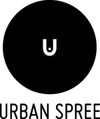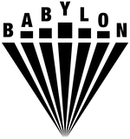THE 9TH ANNUAL CYBERFEST VIDEO PROGRAM
“MODUS OPERANDI”
Curated by Victoria Ilyushkina
Digital media is a reality onto itself.
Technology has created a global space for existing as a virtual identity.
THE 9TH ANNUAL CYBERFEST VIDEO PROGRAM, “MODUS OPERANDI”, examines contemporary means of identification and communication involving digital media.
A selection of 22 short video artworks from around the globe, “MODUS OPERANDI” is a survey of cultural perceptions on the virtual realm. Relationships between physical :: digital environments, individuals :: society online, self-identification :: projected persona, privacy :: shared intimacy, as well as between man :: machine intelligence – are all fodder for the works included in the video art program.
CURATORIAL STATEMENT
“The different viewpoints artists take in looking at the relationship between man and technology is important.
One perspective is to explore the digital future as a natural progression of our past — a classic concept of extending our bodies mapped out by Marshall McLuhan in his work, “Understanding Media of 1964”. Is media a technological prosthesis to humanity?
In “MODUS OPERANDI”, Nelmarie du Preez delves into communication with a machine and Jeroen van Loon scans his computer as if it was a biological being. In a video by Nicholas Steidorf – a virtual alter ego acquires independent life. Martina Menegon’s piece straddles boundaries separating the physical and virtual world by simulating life processes on the platform Second Life. Sandrine Deumier documents the suicide of an avatar.
Or is media a beast onto itself? Is there a pending separation of machine from man: a pressing singularity we are barreling towards? Today’s technology field is paving the way for innovation to be less tied to the man whom created it. As we enter the age of AI, the boundaries of living in a tangible and virtual reality are inconclusive.
“MODUS OPERANDI” includes works exploring where parameters are neither digital nor physical – and instead exist in a new virtual/tangible hybrid plane on a trajectory to one day not need man to function. Francesc Marti’s work deconstructs a Edward Kennedy speech to take on meaning as a nonverbal, rhythmic synthesized pattern. Veronika Reichl’s work robotically decodes Hegel's texts about processes in a way that was not humanly possible until recently.
What does the future hold for creators if technology is used as an extension of humanity? What does the future hold if technology does not need humanity? The video works of “MODUS OPERANDI” grapple with envisioning the world as it will be remembered — a foundation for what is to come.
The digital fabric of culture — from social media to spammers, robots, trolls, authentic advertising techniques.
Egor Kraft creates an online hoax showing the extent of how indistinguishable real from phony has become, in simplest terms of a new color. In Oleg Elagin's artwork, an animated skeleton penetrates the real world to dance with strangers via a mobile app. Myriam Thyes, Felice Hapetzeder, and claRa apaRicio yoldi work with the history we are leaving exponentially behind daily: data.
The 9th Annual Cyberfest Video Program draws attention to the role artists’ have in reflecting a society at the brink of when anything is possible.” — Victoria Ilyushkina, 2015


















